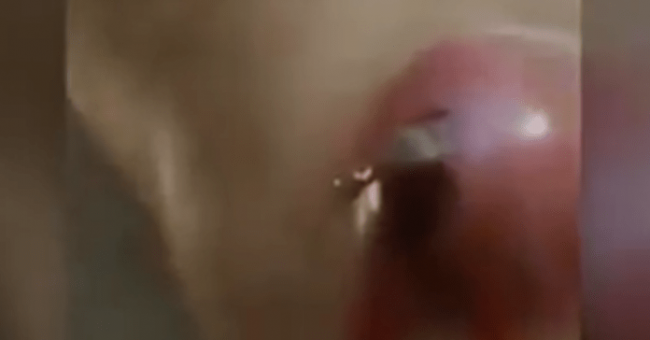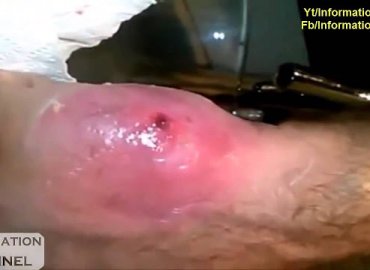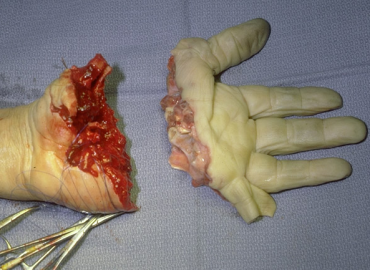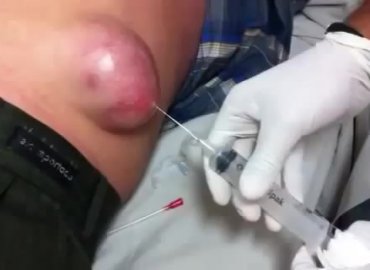An abscess is a tender mass generally surrounded by a colored area from pink to deep red. Abscesses are often easy to feel by touching. The middle of an abscess is full of pus and debris.
Painful and warm to touch, abscesses can show up any place on your body. The most common sites are in your armpits (axillae), areas around your anus and vagina(Bartholin gland abscess), the base of your spine (pilonidal abscess), around a tooth (dental abscess), and in your groin. Inflammation around a hair follicle can also lead to the formation of an abscess, which is called a boil (furuncle).
 Unlike other infections, antibiotics alone will not usually cure an abscess. In general an abscess must open and drain in order for it to improve. Sometimes draining occurs on its own, but generally it must be opened by a doctor in a procedure called incision and drainage (I&D).
Unlike other infections, antibiotics alone will not usually cure an abscess. In general an abscess must open and drain in order for it to improve. Sometimes draining occurs on its own, but generally it must be opened by a doctor in a procedure called incision and drainage (I&D).
Abscess Causes
Abscesses are caused by obstruction of oil (sebaceous) glands or sweat glands, inflammation of hair follicles, or minor breaks and punctures of the skin. Germs get under the skin or into these glands, which causes an inflammatory response as your body’s defenses try to kill these germs.
 The middle of the abscess liquefies and contains dead cells, bacteria, and other debris. This area begins to grow, creating tension under the skin and further inflammation of the surrounding tissues. Pressure and inflammation cause the pain.
The middle of the abscess liquefies and contains dead cells, bacteria, and other debris. This area begins to grow, creating tension under the skin and further inflammation of the surrounding tissues. Pressure and inflammation cause the pain.
 People with weakened immune systems get certain abscesses more often. Those with any of the following are all at risk for having more severe abscesses. This is because the body has a decreased ability to ward off infections.
People with weakened immune systems get certain abscesses more often. Those with any of the following are all at risk for having more severe abscesses. This is because the body has a decreased ability to ward off infections.
Abscess Symptoms
Most often, an abscess becomes a painful, compressible mass that is red, warm to touch, and tender.
 -As some abscesses progress, they may “point” and come to a head so you can see the material inside and then spontaneously open (rupture).
-As some abscesses progress, they may “point” and come to a head so you can see the material inside and then spontaneously open (rupture).
-Most will continue to get worse without care. The infection can spread to the tissues under the skin and even into the bloodstream.
-If the infection spreads into deeper tissue, you may develop a fever and begin to feel ill.
Abscess Treatment: Self-Care at Home
- If the abscess is small (less than 1 cm or less than a half-inch across), applying warm compresses to the area for about 30 minutes 4 times daily may help.
- Do not attempt to drain the abscess by squeezing or pressing on it. This can push the infected material into the deeper tissues.
- Do not stick a needle or other sharp instrument into the abscess center, because you may injure an underlying blood vessel or cause the infection to spread.
 When to Seek Medical Care
When to Seek Medical Care
 Call your doctor if any of the following occur with an abscess:
Call your doctor if any of the following occur with an abscess:
- You have a sore larger than 1 cm or a half-inch across.
- The sore continues to enlarge or becomes more painful.
- The sore is on or near your rectal or groin area.
- You have a fever of 101.5°F or higher.
- You have a red streak going away from the abscess.
- You have any of the medical conditions listed above.
Prevention
Maintain good personal hygiene by washing your skin with soap and water regularly.
Take care to avoid nicking yourself when shaving your underarms or pubic area.
Seek immediate medical attention for any puncture wounds, especially if:
You think there may be some debris in the wound
You have one of the listed medical conditions
You are on steroids or chemotherapy







